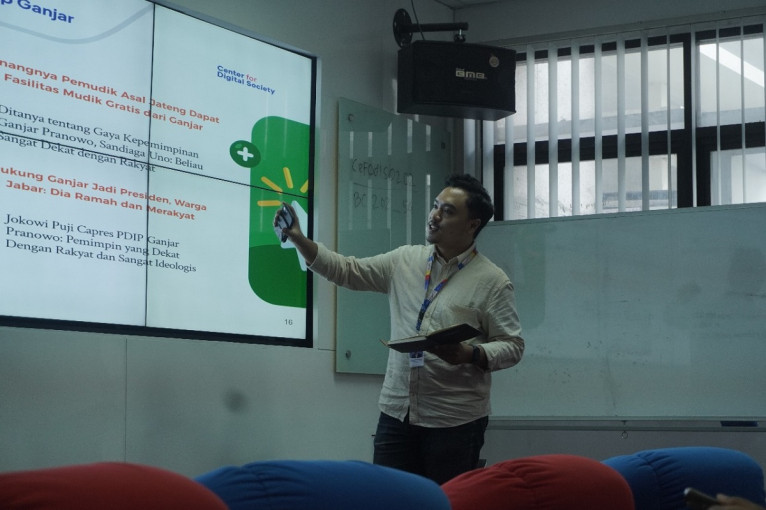
The intense campaign leading up to the political year has created exciting interactions between the public, presidential and vice-presidential candidates, and the media.
Unlike previous elections, campaigning in the media, both digital and conventional, is the current political style trend.
This time, the Center for Digital Society (CfDS) at the UGM Faculty of Social and Political Sciences analyzed the presentation of political content in conventional media released on Tuesday (November 14).
Since ancient times, journalism has always been the main trusted information channel with significant influence over time. Although social media offers better accessibility and speed, the public still chooses journalism as the most reliable. Moreover, journalism can also influence society, information selection, and politician branding.
Perdana Karim, Irbah Asfarina, and Emira Anjani, three CfDS researchers, revealed the media trends in publishing articles towards the 2024 election, covering content, sentiments, and the presidential and vice-presidential candidates addressed.
“Why did we choose journalism media? Because we see that this media plays a crucial role in shaping the narrative. In this study, we selected the five most popular media, namely detik.com, tribunnews.com, kompas.com, cnbcindonesia.com, and cnnindonesia.com,” said Karim.
“These five are considered the most popularly accessed media. And we found many articles related to the context of the 2024 election.”
Data was collected by analyzing articles containing keywords such as the names of the three presidential candidates, elections, and presidential candidates from January 1, 2022, to October 10, 2023. At least 47,305 articles were found from these five media.
“This research found various data, and here it shows Detik’s dominance in mentioning the names of presidential candidates with a total of 23,070 articles, followed by Tribun with 15,388 articles, CNN with 5,320 articles, CNBC with 1,793 articles, and Kompas with 1,734 articles,” explained Karim.
Each media tends to mention one of the presidential candidate’s names. CNBC has many articles that are typically to mention “Anies” and “Prabowo” rather than “Ganjar.” Meanwhile, Detik, Kompas, and Tribun mention “Ganjar” more.
Karim added that this data shows an unbalanced coverage or an imbalance of topics in the media. However, without analyzing the sentiments built, this does not determine the journalism media’s bias towards one or two presidential candidates.
Based on the total number of articles from the five media, more reports with negative sentiment were found than positive ones.
These sentiments are presented through various criticisms, discussions on the candidates’ track records, performance, and sentiments towards political parties.
For example, Anies Baswedan was extensively discussed by CNBC with a 0.93% positive sentiment and an 8.87% negative sentiment.
Meanwhile, Ganjar Pranowo was prominently featured by Kompas with a 1.89% positive sentiment and a 3.78% negative sentiment.
CNBC also covered Prabowo Subianto with a 2.43% positive and 7.14% negative sentiment.
“Building these sentiments actually requires deeper contextualization because negative sentiments, in this case, are not limited to words that are negative towards one party but also words like ‘disappointed,’ ‘sad,’ ‘betrayed,’ and so on,” he added.
“Fortunately, from this data, it can be seen that 95% of the average number of published articles are neutral. And these five media outlets show no drastic tendency to favor or corner one presidential candidate.”
Author: Tasya

